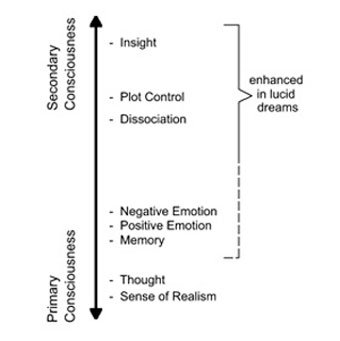Is Inception Really Possible?
 As a working neuroscience researcher, I know that we still understand very little about how the brain works as a whole. Modern neuroscience, as we know it today, sprouted from psychology, with big names such as Sigmund Freud and Ivan Pavlov really paving the way for future generations. The beauty of neuroscience, and all science for that matter, is that nearly every finding raises more questions which lead to a deeper understanding of how things work in your brain, in your body, in the world.
As a working neuroscience researcher, I know that we still understand very little about how the brain works as a whole. Modern neuroscience, as we know it today, sprouted from psychology, with big names such as Sigmund Freud and Ivan Pavlov really paving the way for future generations. The beauty of neuroscience, and all science for that matter, is that nearly every finding raises more questions which lead to a deeper understanding of how things work in your brain, in your body, in the world.
My work is very fundamental, I investigate how synapses work, but I’m still very interested in the bigger questions and really admire those who choose to investigate higher processes such as emotion and consciousness. So I was scanning the internet for some cool neuroscience papers and I came across this one in Nature Neuroscience where researchers were able to induce self awareness in dreams by stimulating the brain with gamma waves. So this might remind you of an excellent film that really blew my mind… Yes, Inception!
As I have already said in almost everything I have written for HeadStuff, fact can be as strange as fiction and here researchers have been able to induce lucid dreaming, i.e. being aware that you are dreaming while dreaming. The authors describe lucid dreaming as;
“In lucid dreams, elements of secondary consciousness coexist with normal REM sleep consciousness, enabling the sleeper to become aware of the fact that he is dreaming while the dream continues. Sometimes the dreamer gains control over the ongoing dream plot and, for example, is able to put a dream aggressor to flight.”

I know some people actually do have lucid dreams even without this brain stimulation and are able to remain in this ‘zone’ and control their dreams. Personally, whenever I realise I am dreaming I wake up soon afterwards.
In this paper the authors began with 27 healthy volunteers (15 females and 12 males) who never had lucid dreams before the experiment. These subjects spent up to 4 nights at the sleep laboratory and were allowed to sleep without interruption until 3a.m., when the scientists started work. The experimenters recorded brain activity during the whole experiment using EEG (electroencephalogram); then they waited for at least 2min of uninterrupted, arousal- free sleep before non-invasive brain stimulation (basically, electrodes on your scalp) at different frequencies. Finally, they woke the subject up and asked about their dream.
What they observed was that stimulation at gamma frequencies (normally between 25 – 100 Hz but researchers found the greatest effect at 40 Hz) induced lucid dreaming.
What I really liked in this paper is that they included some examples of the description given after a lucid versus a non-lucid dream! So instead of showing you some graphs from the paper I will rather include the example dream reports.
Lucid dream report: “I was dreaming about lemon cake. It looked translucent, but then again, it didn’t. It was a bit like in an animated movie, like the Simpsons. And then I started falling and the scenery changed and I was talking to Matthias Schweighöfer (a German actor) and 2 foreign exchange students. And I was wondering about the actor and they told me “yes, you met him before,” so then I realized “oops, you are dreaming.” I mean, while I was dreaming! So strange!”
Non-lucid dream report: “I am driving in my car, for a long time. Then I arrive at this place where I haven’t been before. And there are a lot of people there. I think maybe I know some of them but they are all in a bad mood so I go to a separate room, all by myself.”
I don’t know about you but I would prefer the lucid dream (especially the part about the 2 foreign exchange students!) compared to the non-lucid dream which doesn’t seem to be too much fun.
What you can see is that, apart from the fact that the lucid dream seemed more interesting, is that the lucid dreamer became aware they were dreaming. Scientifically, this finding further implicates gamma brain waves in the conscious awareness. Brilliant work if you ask me.
In any case, this paper was cool and gives us further insight into the origin of consciousness in the brain. However, the paper leaves me with some unanswered questions;
If they turned off the stimulation would the lucid dreams continue? Basically, does the lucid dreaming induced in this experiment depend on gamma stimulation by the researchers?
I would also like to know if these lucid dreams could last for longer. As you might have noticed in the lucid dream report, this person only became aware near the end of their dream. So could we keep these subjects in the lucid dream state and really recreate an ‘Inception-like’ scenario. That would be really amazing.
The authors of this paper go on to say that this work could eventually lead to a treatment strategy for certain disorders, such as post traumatic stress disorder specifically for patients suffering from reoccurring nightmares. This makes sense, as the person would potentially become aware that they are only dreaming and could take control of the dream, right?
To answer the question whether Inception could be possible, well I would have to say no. In the film, people were able to enter into other people’s dreams and control them. Here, people were in their own dream and aware of the fact they were dreaming. So we are not quite seeing Inception but nevertheless these findings are really cool and I personally I would be interested in giving this a try.
